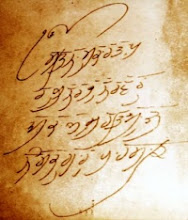THE police looked the other way as politicians led marauding mobs into the city. You could be talking of Delhi of 1984, or Ahmedabad of 2002.
For its very long history, India has an extremely short memory. Uncomfortable events from the past are tucked away into obscure corners. Especially those that involve violent bursts of passions stoked by religion, caste, politics or plain hatred.
May be it is the greed to move forward to the future that prevents backward looks. But the forward march is more often than not interrupted by another round of bloody sacrifice of innocence. And yet again the nation fails to offer succor to its victims, deliver justice, punish the guilty.
Assurance of immunity to the criminal is almost ingrained in the society. Witnesses to bloody pogroms in India grow up without any guilt. Each mob violence is forgotten in the next one.
In just three days, over 4,000 Sikhs were killed in the wake of the assassination of Indira Gandhi, India's most controversial, powerful and longest-serving prime minister. The poorest neighbourhoods in Delhi saw the worst riots.
It was an organised massacre of the minority community by politicians and their supporters. Rioters had a free run as the Delhi Police looked away. They ruled the streets as an overwhelmed civil society figured ways out.
Within days of the riots, the usual Indian response was triggered: Commissions and committees, assurances and some stupid political statements, charges and counter charges, and denials by the very leaders who incited the mob to violence.
Hundreds of FIRs were registered by the police. Hundreds more were refused, because the victims wanted to name Congress leaders like Sajjan Kumar, HKL Bhagat and Jagdish Tytler.
Investigations into hundreds of murders were closed by police, they didn't even make it to courts. Hundreds of murders are yet to be even registered by police.
In 20 years, nine commissions and committees have inquired into the riots. The first one headed by Justice Ranganath Mishra, who went on to become India's chief justice and later the National Human Rights Commission chief. But the commission was a sham. Statements submitted by widows and victims were made available to the accused like Sajjan Kumar, whose supporters were allowed to file their responses months after the deadline. Years later, the CBI found these statements in Sajjan Kumar's house.
The latest commission, one led by Justice GT Nanavati, is still to complete its inquiry. The government last week gave yet another extension to him.
By 1990, six years after riots, just one killer had been convicted. Three special courts set up in 1990 were almost shams. One court acquitted over 100 accused within weeks. The exception was the court chaired by judges like SN Dhingra.
Widows and survivors walked the Kafkaesque corridors of Delhi courts for years in search of justice. They were threatened, some gave in. A handful of the Sikh leaders were accused of taking money from the accused.
Through the travails of these victims, Delhi progressed. Apartment complexes, BPO boom and malls - it has been an unprecedented two decades for Delhi as right wing ideology burst into the scene. Hopes of the BJP-led government delivering justice were misplaced.
The past two decades has been an unending trauma for the riot victims eeking out a living in the shanties and crumbling colonies, earmarked for them. For the orphans of 1984, the lost childhood has been replaced by a miserable youth.
In a city that is a comfortable home to political refugees from over 40 countries, the victims of 1984 are forgotten and hidden - like sins.
Delhi has been the graveyard of many an empire: Be it the Slave Dynasty, Lodhis, Mughals or the British. But can modern Delhi overcome its history? Will India survive the curse of history? For a country that refuses to learn from history how bright could the future be?
The answers to these questions lie buried in the lessons of the past. In search of a solution to the endless cycle of violence, Timesofindia.com captures various aspects of the 1984 riots, its victims and responses, hoping that the leaders, authorities, ordinary men and women realise that no cause is worth a life.
There is one more link i would like to share with every one.
Source Timesofindia.com




